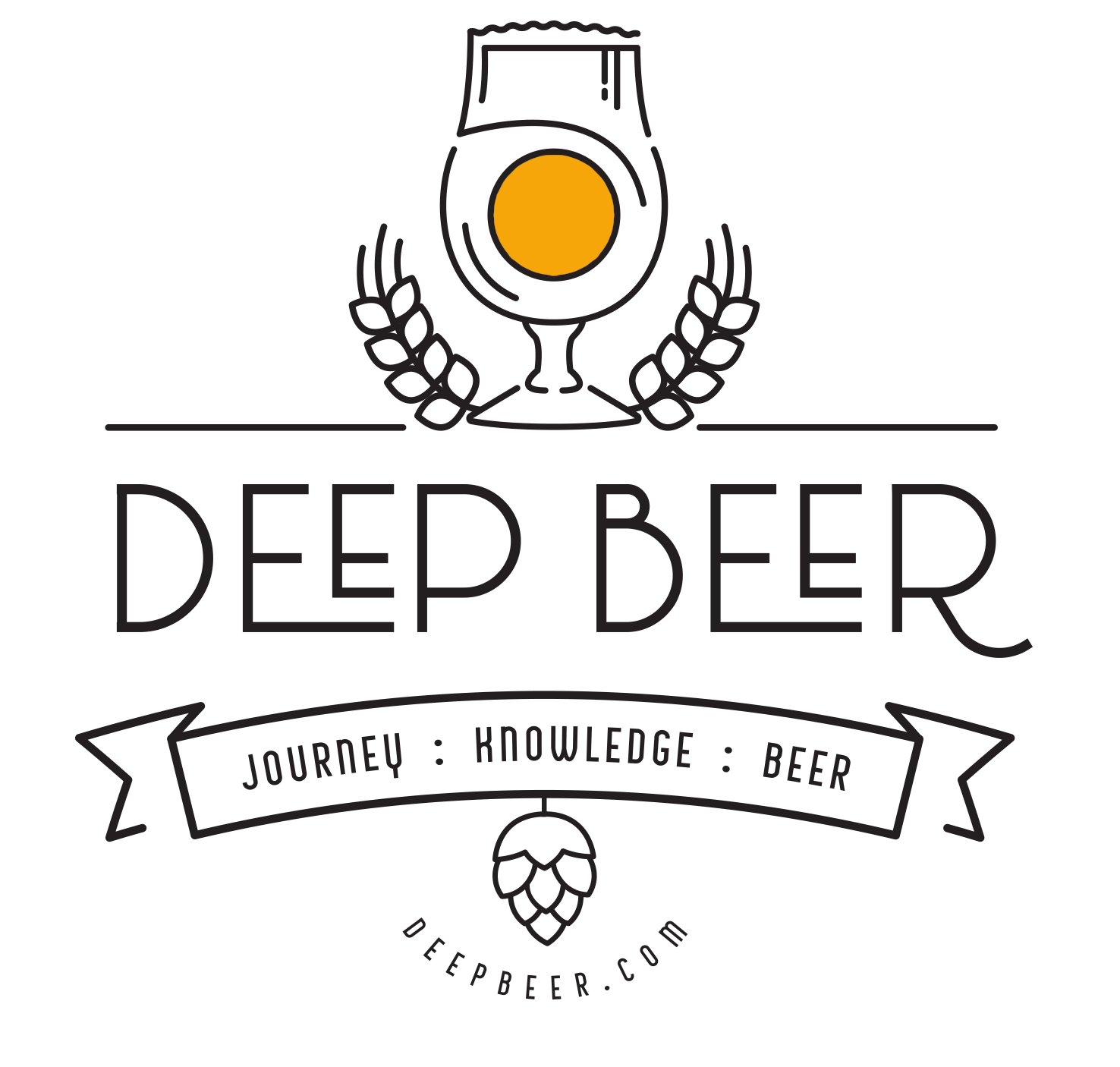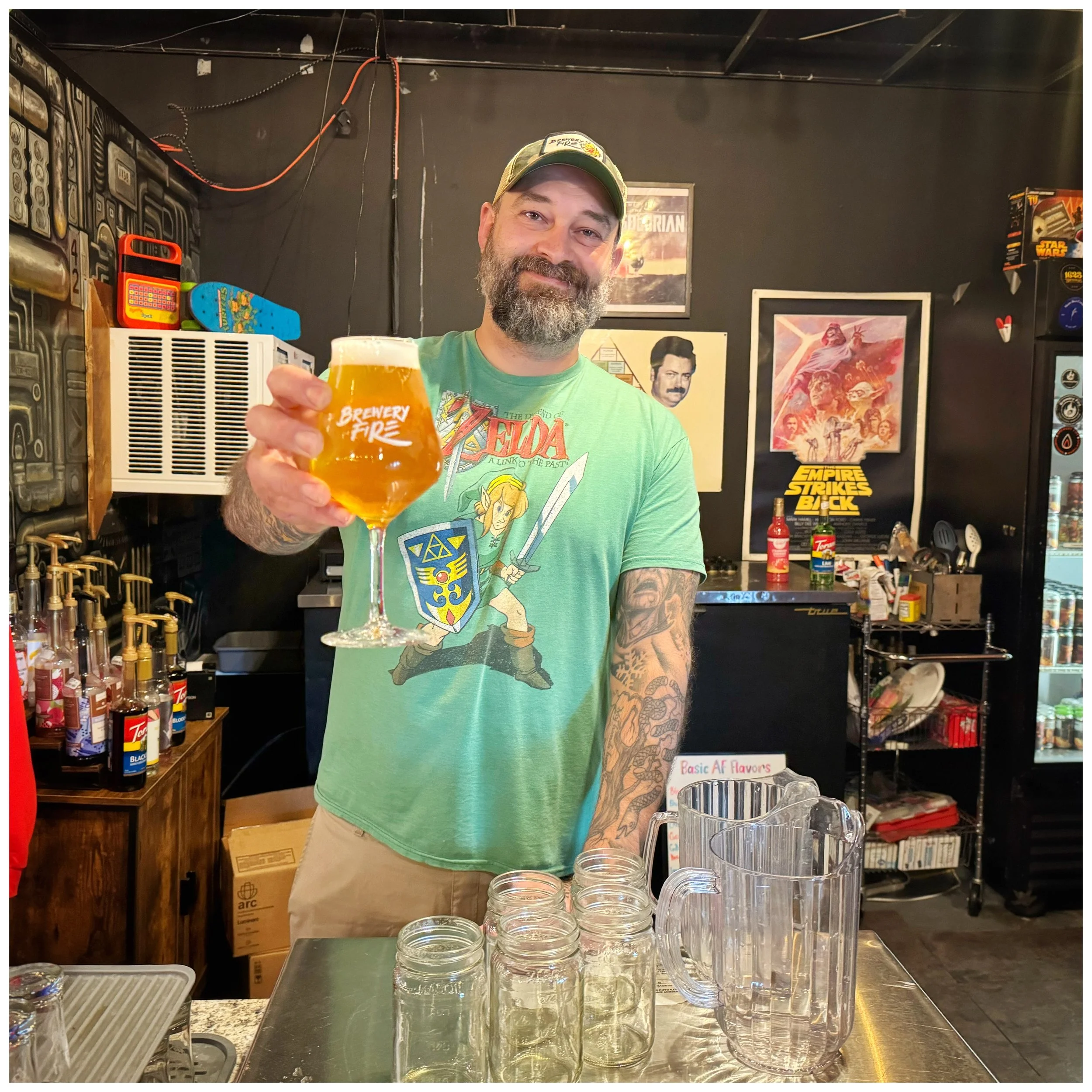THE SESSION — BEER BLOGGING FRIDAY
The Session, a.k.a. Beer Blogging Friday, is an opportunity once a month for beer bloggers from around the world to get together and write from their own unique perspective on a single topic. Each month, a different beer blogger hosts the Session, chooses a topic and creates a round-up listing all of the participants, along with a short pithy critique of each entry.
“On March 5, 2016, I did a Baltimore Beer Tour based on the Brewmore Baltimore film. I documented the experience in a series of 10 Tweets.”
This month's topic was Twitter Theories hosted by Sean Inman at Beer Search Party
"So, why then did I choose Twitter as a topic for beer bloggers? There were external factors such as the 10th anniversary of the first Tweet that happened in March as well as the possibility of Twitter expanding to more than 140 characters but really, I wanted to show that it is woven into the fabric of craft beer. "
My first reaction to this notion of doing a beer journal entry based on a series of Twitter posts was mixed. I'm new to the Twitter world and just now beginning to understand how and why this form of social media works. Then it clicked and I got excited about the concept. My Twitter posts are below. You can find my posts as @deepbeer and these journal entries all use the hashtag #BaltimoreBeer. Let me know what you think by adding your comments or following along on Twitter. You also find all my Twitter activity and Social Media here.
Baltimore Beer Tour - One fine March Saturday I was attending an event at the Heavy Seas Brewing just outside Baltimore. It was one of those bottomless glass events with every imaginable take on chicken wings. The beer was great, but after about two-hours I'd had my fill and decided to leave. Then it dawned on me, why not follow some of the iconic brewery locations highlighted in the film Brewmore Baltimore – a look at the historic brewing scene of Baltimore 100 years ago till the emerging icons of Baltimore today. So I set my GPS for the American Brewery and I was off on my Baltimore Beer Tour adventure.
Brewing in Baltimore - While looking through some websites about National Beer I discovered a couple books on the history of the beer industry in Baltimore. I quickly ordered both and began to read the storied events that made Baltimore an important beer town over 100 years ago.
Brewmore Baltimore - As I was reading these two books, I discovered that both of the authors were involved in a recent film entitled Brewmore Baltimore. It seems that the film had been released just a few months before and was being aired on the Maryland Public Television fund raiser. I almost missed it, but it was going to show one more time and so set my digital recorder to capture the showing.
National Beer - Growing up just outside Baltimore, I was very aware of National Beer or "Natty Boh" as the locals know it. A good friend of my father worked at the brewery and always was bringing National stuff for us kids. Not beer, but posters, coloring books and the like. Now as an adult and someone interested in the craft beer movement and specifically the beer scene in Baltimore, I wanted to follow how National Brewing was established, grown and declined. Even though the beer isn't brewed in Baltimore any longer, the one-eyed Natty Boh guy is still iconic of Baltimore beer.
The American Brewery - The first time I think I saw the American Brewery building was watching that documentary of the early brewing industry of Baltimore. I heard about it years before, during a news report, that someone had purchased the old brewery. I didn't even know it existed. I figured they would be brewing beer here again. No, it was purchased by Humanim, a social services organization.
The brewery building was built in 1887 by John Frederick Wiessner, a german immigrant, and a brewer in East Baltimore. Prohibition forced it to close in 1920 and it was sold to the American Malt Company in 1931. The Allegheny Beverage Company brewed beer here again until 1973. From that time, until 2009, when the Humanim group renovated the building, it had fallen into sad disrepair.
When I made my way north toward the American Brewing building that day in March, I passed from one block to another of once iconic row houses that were either boarded up or being torn down. As I turned onto Gay Street, there it was, standing tall and beautiful like an oasis in the desert.
My first thought was that it was closed and perhaps I could walk around and gain a glimpse to the building. Then a UPS truck pulled up and took its packages inside. The parking lot was near empty, so I parked and ventured inside. I learned some time ago that if you just try, sometimes miracles happen. It did!
As I entered the front doors I was greeted by a friendly guard at the front desk. I asked if they ever gave tours of the building and he kindly told me yes, but during normal business hours. Then someone from close by said, "I'll give you a tour".
So for the next 20-minutes I had a personal tour of The American Brewery building. As we passed from room to room I was amazed at how they had worked to keep as much of the brewery intact in the new construction. As depicted in the Brewmore Baltimore film, the old grain silo was still there in part and with kernels of grain still holding on between the boards.
Hugh Sisson - A friend once lived on federal Hill in Baltimore and told me of a restaurant just down the street that was brewing from beer. The restaurant was systems. Years later, after I became interested in good domestic beer I came across a brewery called heavy seas and founded by Hugh Sisson. yes, it was the same person.
The interesting fact about you and systems is of the time there were no brewpubs in the state of Maryland. And you work with local legislators to change the law allow that to happen and thus opening the door to brewpubs across the state. you later left the restaurant to pursue brewing as a full-time business. Heavy Seas is now is the largest brewery in the Baltimore area.
I had the good fortune recently to have been asked to provide a breakfast speaker for a conference. So I asked Hugh if he would be interested and he said yes. I had Hugh mostly to myself as we ate breakfast that morning. Since the audience was composed of mostly foresters, I asked if he could discuss their barrel aging program. He brought four bottles of an imperial stout aged in bourbon barrels. Needless to say, that was a hit and the topic of discussion for the rest of the day.
Baltimore Beer Innovations - Baltimore was a big beer town—it still is. My family (and more friends each year) go to the Christkindlmarkt at the Zion Church in Baltimore. This is held the first weekend after Thanksgiving. You can be standing in line for a german sausage with the person behind you speaking german, very willing to discuss their family history. One highlight is the tour of the church—a wonderful history. One of the things the tour guide mentions is contributions and influence of the local german brewers to the church. He said the boat from Germany made a stop in Baltimore. The german people were often craftsman with marketable skills. The german businessmen would go to the boat as it arrived and ask people that got off if they spoke german. If they said yes, the response was 'come, I have work for you'. The germans knew how to brew beer and many early brewers were established in Baltimore as a result. These breweries and the Zion Church are highlighted in these two books.
Many important contributions to the brewing industry came out of Baltimore. In 1892, the inventor William Painter patented the 'crown cork' and started the Crown Cork & Seal Company of Baltimore. We know this today as the bottle cap. Also, National Brewing was the first to package beer into six-packs because they learned that six was about the most a wife could comfortably carry home from the market.
National Premium Reborn - I attended a beer lecture and tasting without knowing much about the presenters. I turned out that the speaker had been a master brewer and his side-kick was Tim Miller, the man responsible from returning National Premium Beer to beer shelves. While there was the ubiquitous National Bohemian beer, the upscaled version was National Premium. The former was picked up and has been brewed at a number of locations around the country. Natty Boh is still popular around the Baltimore area, even though it hasn't been brewed here for decades. However, the National Premium label was discontinued after being purchased by Stroh Brewing in 1996. In 2011, Tim Miller bought the rights to National Premium, learned the recipe from a brewer who had worked at the plant in the 1970s, and again National Premium pilsner is available for our drinking pleasure.
New Baltimore Beer Icons - A key feature, and an important one, of the Brewmore Baltimore film was the emerging and development of current beer culture and brewers that have brought that forward. Hugh Sisson certainly was one of those. Another rock star of the Baltimore beer cult is Brian Stumpke of Stillwater Brewing and principal behind the up-scale Of Love & Regret. This is place gets a "World Class" rating on Beer Advocate and from what I heard and saw and drank the afternoon I was there, it is well deserved. Pricey, perhaps, but this is in an upscale part of the gentrified Canton neighborhood of Baltimore, and sorry, but the beer is excellent. A couple of professionals sat at the bar when I was there enjoying red wine. I asked why you would drink wine at an obvious beer establishment. There response was something like, whatever they do, they do extremely well—the beer, the wine, the food.
Baltimore Beer Bucket List - There are still other prominent Baltimore breweries I must mention and some I still need, no must, visit. The Brewer's Art creates some excellent Belgian-style beers. Theirs is an incredible venture in the heart of Baltimore, not far from another Washington Monument. Waverly Brewing has some great beers, too. Union Brewing is another on the bucket list. Hey, Rome wasn't built in a day, and we must leave something to look forward to.












